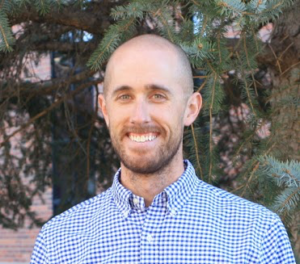The Agriculture Department, state agencies, private companies and nonprofits are preparing to distribute $1.1 billion through 81 new Regional Conservation Partnership Program projects that span from support for new sprinkler irrigation systems to incentives for dairy farmers to use feed additives in the hopes of reducing methane emissions.
The projects are being funded through a combination of both FY23 and FY24 dollars allocated through the Inflation Reduction Act and the 2018 farm bill. The IRA allocation of $747 million is specifically for climate-focused projects, while the $271 million in farm bill funding can be used for a range of other purposes, including water conservation and wildlife habitat.
According to USDA, 77 projects totaling $1.02 billion are climate-focused, while 22 representing more than $338 million in funds are focused on water quantity and conservation. Sixteen projects accounting for $216 million are focused on protecting and restoring wildlife habitat and 10 focus on urban agriculture.
Andrew Lentz, the director of federal affairs for the Environmental Defense Fund, said several of the climate-smart practices that meet the IRA requirements also bring non-climate benefits.
“A lot of the same practices that we use to mitigate climate change in agriculture actually have a lot of really important co-benefits of improving soil health and water quality and those types of things as well,” Lentz said.
Three projects representing over $58 million are being led by tribes, the agency said. The Blackfeet Nation is leading a $15.3 million project focused on installing sprinkler irrigation systems, while a $20.3 million project led by the Grant Traverse Band of Ottawa and Chippewa Indians seeks to preserve 3,700 acres of land near streams through perpetual easements. The Gila River Indian Community will head a $22.8 million program to construct at least 8.5 miles of pipelines to replace open channel canals, while also upgrading 7.61 miles of earthen ditches.
 Bruce Knight, Strategic Conservation Solutions
Bruce Knight, Strategic Conservation SolutionsBruce Knight, a conservation policy consultant who served as NRCS chief during the George W. Bush administration, told Agri-Pulse the $3.1 billion Partnerships for Climate Smart Commodities initiative the agency created last year using USDA's Commodity Credit Corporation spending authority “whetted the appetite” for similar projects. Knight believes this has led to expanded interest by nonfederal entities in RCPP.
“This really shows that RCPP is stepping into the gap and being able to provide voluntary opportunities for those folks who may have felt they didn’t get the full opportunity to enroll in the climate-smart grants,” Knight said.
Among the water conservation projects, one that aims to reduce water use in parts of the High Plains, where the Ogallala Aquifer is under threat of being depleted, received $24.9 million in funding under the announcement. Steve Frost, the interim director of conservation at the Kansas Department of Agriculture, said the project aims to reduce water use in each of the state’s five groundwater management districts — Big Bend, Equus Beds, Northwest Kansas, Western Kansas, and Southwestern Kansas — by 10%.
The Kansas Department of Agriculture will also be putting $17.5 million toward the project, while the Kansas Water Office will be providing $10 million.
“The investment is worth it because the resource is worth it,” Frost said of the Ogallala Aquifer, which supports around $35 billion worth of crops every year. Water levels in some parts of the aquifer have dropped more than 100 feet since 1950, according to the U.S. Geological Survey, and continued depletion of its reserves has sparked contentious state-level discussions over the actions needed to halt future declines.
Around $18 million of the project’s funding will be used to incentivize farmers to adopt water-saving practices, including cover crops, no-till farming, or playa restoration, Frost said.
The program may even support practices that help farmers transition from irrigation to dryland farming, Frost added.
The money will be distributed to farmers by the Kansas Department of Agriculture’s conservation division through “alternative funding arrangements.” The remaining funds for the program, Frost said, will be split between hiring 10 irrigation specialists to work with landowners and purchasing equipment to evaluate the efficiency of irrigation wells and pumping plants.
He said his goal, while optimistic, is for the program to see participation from “hundreds” of landowners and producers and run for around 5 years. It could also serve as a model for future programs, he added.
“What it’s intended to be is like a demonstration project, really,” Frost said. “We hope to utilize some of the results from this demonstration project for additional technology transfer and more information education.”
Along Colorado's Northern Front Range, the Jefferson Conservation District will be leading a $13.4 million project focused on reducing the impacts of wildfire and flooding by clearing trees on 4,000 acres of private lands. High tree numbers can provide extra fuel to wildfires and because the trees in this region often aren’t valuable enough to incentivize foresters to harvest them for commercial purposes, conservation districts look to programs like RCPP to fund the heavy equipment needed to remove them, JCD director Garret Stephens said.
 Garret Stephens, JCD
Garret Stephens, JCD“The more and more forest biomass, the hotter and faster and more dangerous wildfires are,” Stephens told Agri-Pulse. “So we’re not so much trying to prevent wildfires from happening as opposed to trying to prepare the land to receive and survive wildfires.”
JCD, which will be working with the Boulder Valley, Larimer and Longmont Conservation Districts on the project, also plans to follow up the forestry work by treating the affected land for noxious weeds, which often spring up after trees have been removed. The noxious weed treatments are expected to cover around 8,000 acres of land, Stephens said.
“The noxious weeds are sort of a natural outcome of the forestry work, but they can be controlled,” Stephens said.
Some funds will also go toward restoring 100 acres of riparian and stream habitat, which can help prevent flooding that may occur after wildfires, Stephens said.
It’s easy to be “in the know” about what’s happening in Washington, D.C. Sign up for a FREE month of Agri-Pulse news! Simply click here.
The National Fish and Wildlife Foundation and Stoneyfield Organic are leading a $10 million project focused on incentivizing Vermont organic dairy farmers to adopt conservation practices that help with manure management, runoff and erosion reduction, and pasture management, though NFWF’s Northeastern Regional Office director Amanda Bassow said the organization wants to help farmers “adopt whole conservation plans and identify their highest priorities.”
Dana Bourne, the sustainable agriculture manager for Stonyfield Organic, said the program’s focus on organic dairy farmers in Vermont will help these producers, often with smaller herds than commercial farms in other regions, overcome some of the cost and technical assistance challenges they face in implementing conservation practices. These dairies often face difficulties ranking high enough to secure funding through EQIP and other USDA conservation programs, she said.
Bourne said the program can also help smaller farmers find manure management methods that better fit their needs than technologically advanced and expensive practices like anaerobic digesters. She added that the program will help several organic dairy farmers who have already adopted some conservation practices continue investing in additional ones.
“I think we see these projects as making sure that as government funding is coming, this new wave of climate-smart agriculture is arriving, that these early adopters don’t get left behind,” Dana Bourne, the sustainable agriculture manager for Stonyfield Organic, said.
Nine dairy projects in all, including the Vermont-focused effort, received funding under USDA’s announcement, with several aimed at helping with the industry’s methane reduction goals. A $22.8 million program led by the Dairy Farmers of America seeks to use feed additives to reduce methane emissions, while a $6.2 million Michigan-focused project is hoping to do the same using NRCS-recognized manure and feed management practices.
Ducks Unlimited is leading four projects that received funding from NRCS — an $8.8 million program in Wisconsin to restore 800 acres of wetlands; an $8 million program in Iowa incentivizing in-field and edge-of-field wetland restoration, water quality, soil health and wildlife management practices; a $10 million program in Kansas that will fund land management contracts and conservation easements for restoring and protecting wetland and riparian barriers, and a $25 million program to restore 25,000 acres of South Dakota grassland over five years.
“There’s a basket of strategies here that are represented in these four grants,” Ducks Unlimited CEO Adam Putnam told Agri-Pulse.
Partners on the Ducks Unlimited projects include state fish and wildlife agencies in South Dakota, Nebraska and Kansas, as well as the Iowa Department of Agriculture and Land Stewardship, the Nature Conservancy, Iowa State, Audubon Great Plains, and the Mississippi River Cities and Towns Initiative.
Several of the groups interviewed by Agri-Pulse said the agency set a May deadline to complete negotiations for the recently announced programs.
For more news, go to Agri-Pulse.com.
Editors note: A previous version of this article incorrectly stated that Ducks Unlimited was leading an $8.8 billion program in Wisconsin and a $10 billion program in Kansas. The Wisconsin program has received $8.8 million, not billion. The Kansas program received $10 million. A previous version also incorrectly stated the Jefferson Conservation District project received $13.4 billion. That amount is actually $13.4 million.


